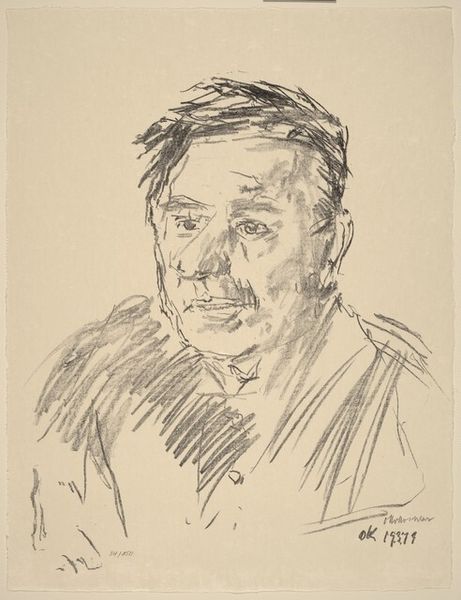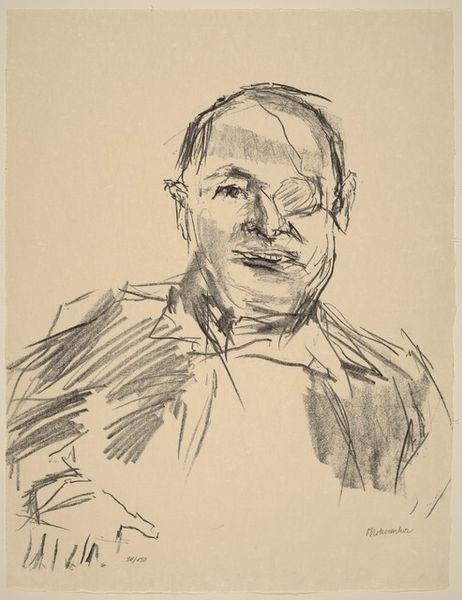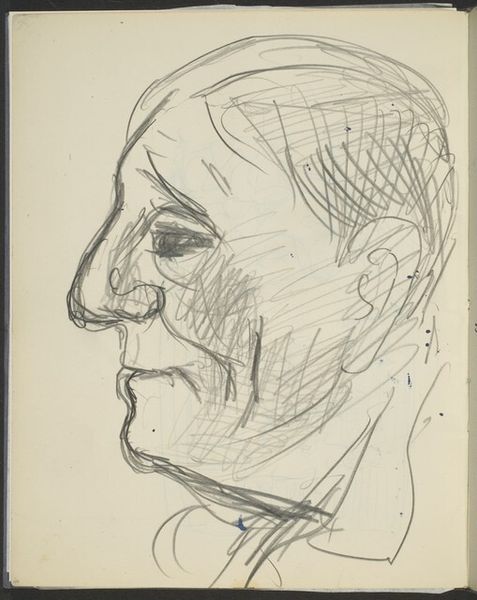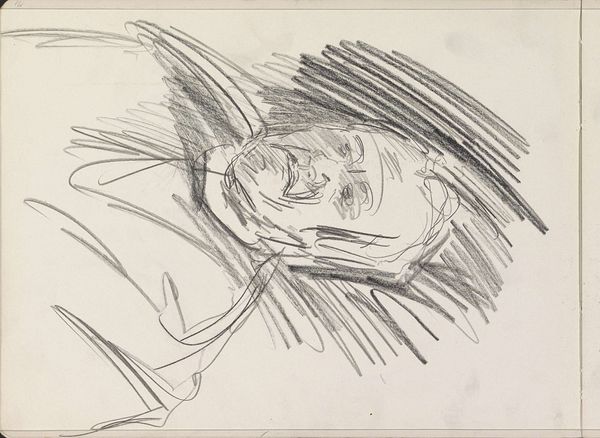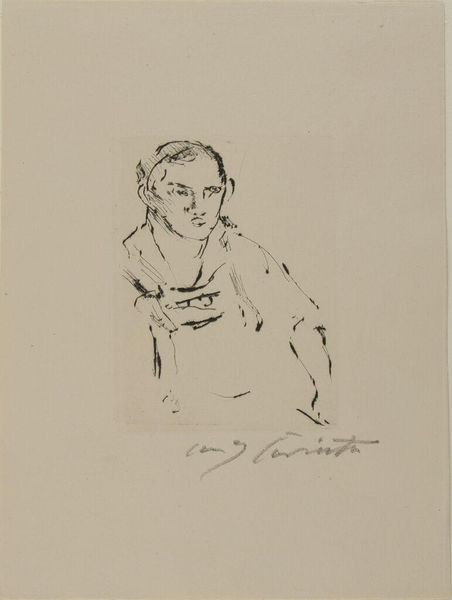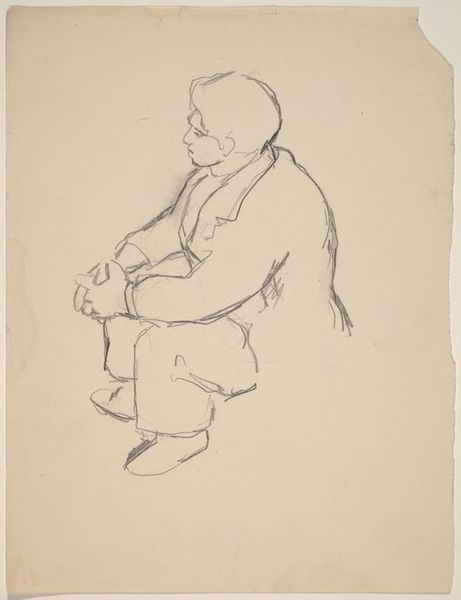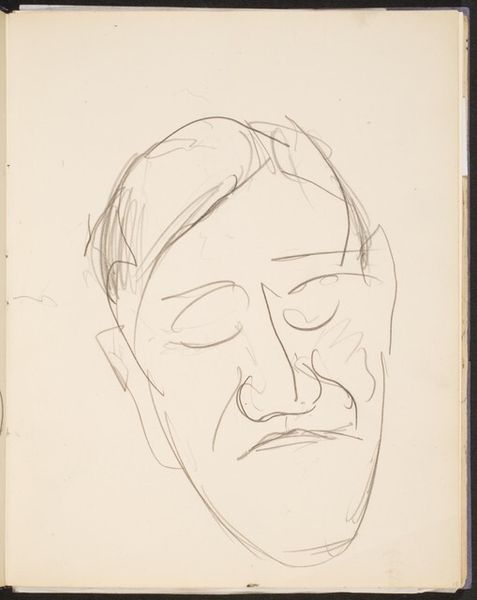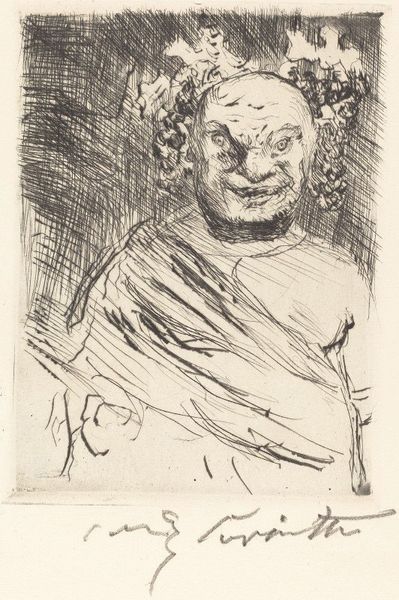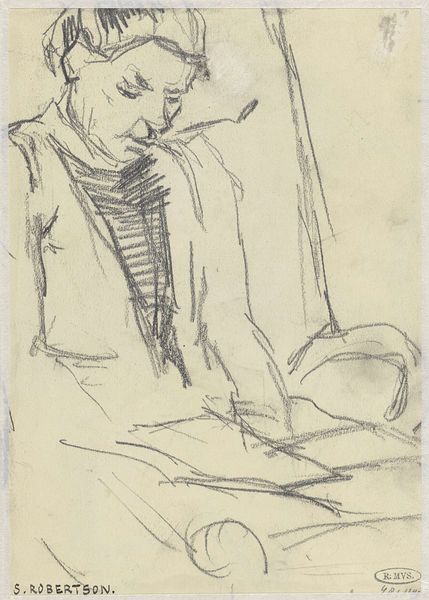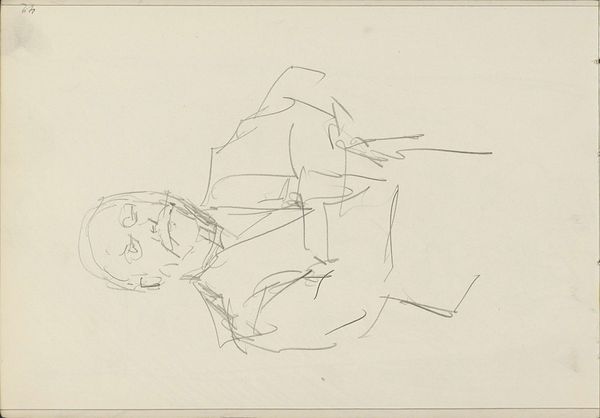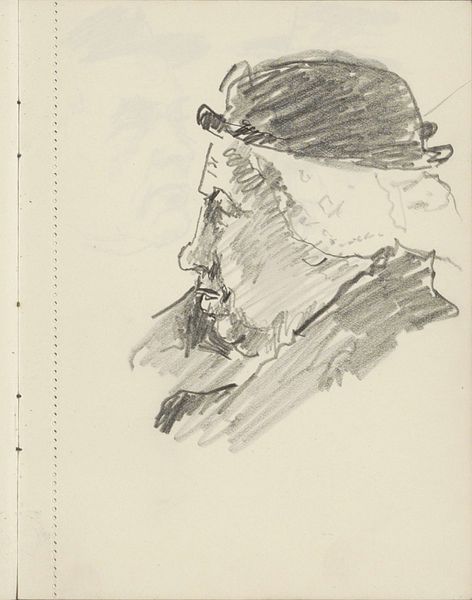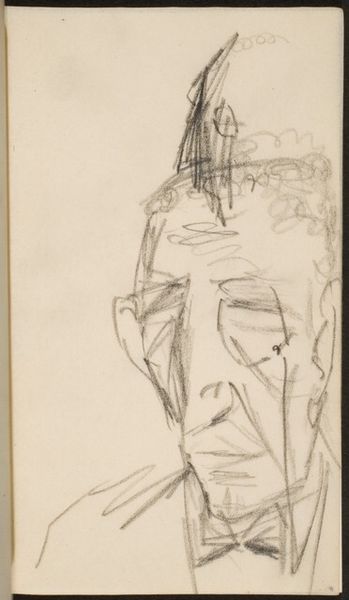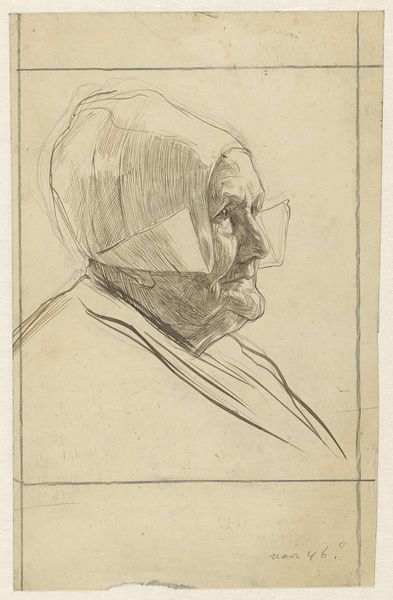
Sheik Mustafa Khalil el-Ansari, Chief Warden of the Mosque of Omar 1973
0:00
0:00
Copyright: National Gallery of Art: CC0 1.0
Curator: Well, here we have Oskar Kokoschka’s 1973 pencil drawing and print titled, "Sheik Mustafa Khalil el-Ansari, Chief Warden of the Mosque of Omar.” It's a fascinating piece. Editor: It is. At first glance, it strikes me as intimate, despite the Sheik’s formal role. There's a softness to it that the pencil work really accentuates, a feeling of momentary stillness captured in this powerful sketch. Curator: Kokoschka had an interesting relationship with portraiture; he aimed, as many expressionists did, for something deeper than surface likeness. I think that sensitivity shines through, don't you agree? Notice the weight given to certain features? Editor: Absolutely. The eyes and hands, for example, possess so much character. It's intriguing how Kokoschka renders these crucial expressive zones with confident, heavy lines, and the hands resting quietly almost convey the experience of his faith and guardianship. The image almost humanizes a figure we expect to be depicted as austere and powerful. Curator: Precisely, and if you consider the historical moment, the drawing offers a unique commentary. This was during a tense political era, after the Six-Day War. To depict a religious leader from Jerusalem with such apparent tenderness seems deliberately chosen, perhaps subtly advocating understanding. The drawing becomes a socio-political statement. Editor: And the casual, almost hurried strokes add a layer of immediacy. You can see Kokoschka's Expressionistic style at work. The distortions create the sense of emotion, making the sheik both present and vulnerable in the print, transcending his title in that sense. Curator: What's particularly poignant, too, is understanding the reverence and authority Sheik Mustafa would embody to those familiar with the cultural memory surrounding the Mosque of Omar. Kokoschka successfully encapsulates both his immediate personality and a hint of this greater significance. Editor: Yes, the symbols aren’t overt, but you intuit them. Considering this was one of Kokoschka’s later works, do you believe his mature style focused more on portraying subjects through implied cultural and historical references, as we've seen in this image? Curator: I think so. It's a piece layered with meaning, prompting a dialogue beyond just visual representation. Editor: A fitting reminder that even a quick sketch can hold profound insights, inviting viewers to ponder history, faith, and human connection.
Comments
No comments
Be the first to comment and join the conversation on the ultimate creative platform.
